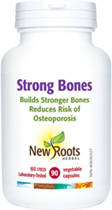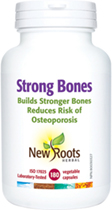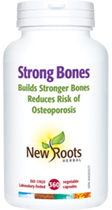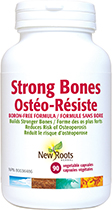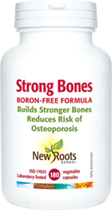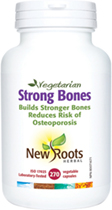Osteoporosis and the Aging Woman: Can Natural Health Products Help?
Osteoporosis is a condition that affects the bones. Our bones continually regenerate through a natural process that replaces old bone with new bone. However, as we age, this natural process becomes less efficient, and we begin to lose bone tissue. With osteoporosis, this process becomes imbalanced: the body breaks down old bone tissue faster than it can replace it with new bone tissue, resulting in weak and thin bone that’s more prone to fractures.
Osteoporosis is most prevalent in people 50 years and older, with 2.3 million Canadians living with osteoporosis. In Canada, 80% of all diagnosed are women, which means it will impact more than 1 in 4 women.[1]
Bone loss is not an automatic consequence of old age, but it is a common occurrence. The good news is that healthy lifestyle factors and natural health products can help delay, manage, or even prevent its progression.
Here are four things women can do to support their bone health as they age.
1-Ensure Adequate Levels of Vitamin D and Calcium
Calcium plays an important role in bone structure and is necessary for building and maintaining your bones. Vitamin D supports calcium absorption. Not only does calcium play a role in bone growth and regeneration, but it is also important for muscle contraction and optimal functioning of your nervous and cardiovascular system. If you don’t have enough calcium in your diet to meet the needs of those bodily systems, the body will take calcium from your bones; therefore, your bones will begin to weaken.
Our bodies do not make calcium, which means you must get it through diet or supplementation. The recommended intake for women over 50 years old is 1,200 mg per day.
Food sources of calcium: Milk and dairy products, fish with the bones like canned salmon or sardines, calcium-fortified beverages like almond milk, dark leafy greens, legumes like chickpeas, almonds, and more.
Vitamin D is a fat-soluble vitamin that our bodies need for bone growth, regeneration, and remodelling. It works to support calcium by increasing intestinal calcium absorption. Our best source of vitamin D is through the sun, but in the winter, our direct skin exposure to UVB rays is reduced, and during the summer, we are advised to protect our skin from the sun’s harmful rays.
Food sources of vitamin D: Egg yolks, cow’s milk and plant-based milk alternatives, products fortified with vitamin D such as breakfast cereals, orange juice, and fatty fish such as salmon.
Research has found a link between older adults with osteoporosis and increased likelihood of being vitamin D–deficient.[2] As food sources are so limited, taking at least 800–1,000 international units (IU) per day is recommended for all adults. Your health-care practitioner may advise even higher amounts, depending on your situation and needs. However, research has found that smaller, regular doses are effective as well.[3]
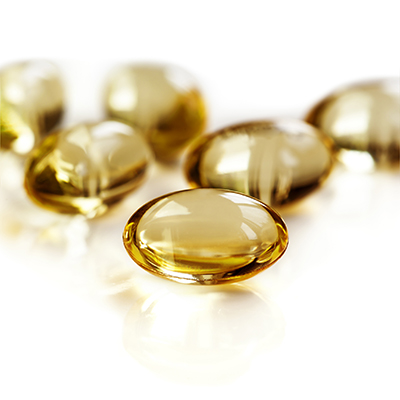 When to Consider Taking Vitamin D and Calcium in the Supplement Form?
When to Consider Taking Vitamin D and Calcium in the Supplement Form?
If calcium and vitamin D needs cannot be met through your diet alone, it is important to supplement to meet your needs. In fact, vitamin D and calcium supplementation have been linked to a lower risk of hip fractures and slower rates of bone mineral density loss.[4], [5]
2-Consume Protein with Each Meal
Proteins are macronutrients, meaning they provide the body with energy. They also play an important role in our bone health. In particular, collagen, the primary protein found in bones, provides the framework for the deposition of calcium, helps with bone formation and bone healing, and adds resilience and flexibility to the bones. Having protein at each meal ensures you are consuming the building blocks for the synthesis of collagen needed to support your bone health.
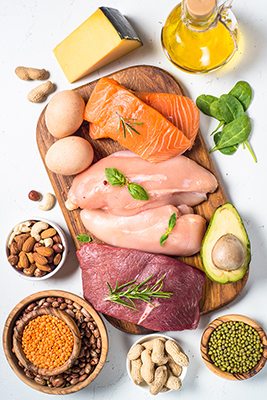 Vitamin K also plays a role in supporting healthy bones, by facilitating calcium deposit in bone structure instead of blood-vessel walls. Low vitamin K levels are linked to increased risk of fractures and low bone mineral density in women.
Vitamin K also plays a role in supporting healthy bones, by facilitating calcium deposit in bone structure instead of blood-vessel walls. Low vitamin K levels are linked to increased risk of fractures and low bone mineral density in women.
Food sources of vitamin K: Dark leafy greens; cruciferous vegetables; herbs like parsley, thyme, and basil; and soybeans in all its forms, like raw, fermented, as soy milk, or tofu. You can also choose a vitamin D supplement with K₂ added to it to support bone health.
3-Consider Taking a Magnesium Supplement
Magnesium is a mineral that is involved in hundreds of reactions in our bodies, along with being important to bone health. It is so important that up to 60% of magnesium is found in our bone tissue. Magnesium deficiency is not uncommon and can play a role in low vitamin D levels, since it is necessary for the activation of vitamin D in the body. Research has found positive correlations with increased intake of magnesium and bone mineral density, specifically in the hip area, meaning improved levels of bone mineral density with increased intake of magnesium.[6] In addition, a trial with 20 postmenopausal women with osteoporosis taking oral supplementation of magnesium for 30 days resulted in reduced bone degradation. The suggested daily intake of magnesium for women 50+ years of age is 310–320 mg per day, some of which can be from food sources or supplementation.[7]
Food sources of vitamin K: Nuts and seeds such as quinoa, almonds, and pumpkin seeds; dark leafy greens like spinach and Swiss chard; black beans; dark chocolate; and salmon.
4-Engage in Regular Resistance Training and Weight-Bearing Exercise
Exercise is good for overall health, including maintaining a healthy weight, cardiovascular health, and mental health. Weight-bearing exercises, such as walking/hiking/jogging and resistance training (e.g., lifting weights), where your muscular system is challenged, will improve not only muscular strength but also bone strength.
How Does Resistance Training Help Strengthen Your Bones?
Resistance training puts stress on your bones (the good kind of stress) that activates bone-forming cells and supports calcium deposits into your bones. This leads to stronger and healthier bones.
How Often Do You Need Resistance Training?
Aim for at least 2–3 times a week. This will help ensure you are strengthening both your muscles and bones.
If you have osteoporosis or are a woman 50+ years of age, start looking at the type of exercise you engage in, the foods you eat, and the supplements you take to see if you can make any changes to better support your bone health. Your bones are supporting you daily, so it’s important you are taking the steps to keep them healthy!
Angela Wallace, MSc, RD
Angela Wallace is a registered dietitian, certified personal trainer, and Pilates instructor. She specializes in nutrition for women and children. She is passionate about helping women feel their best from the inside out.
You can follow her on Instagram @nutrition.for.families
References
[1] Osteoporosis Canada. What is osteoporosis? The “silent thief.” https://osteoporosis.ca/what-is-osteoporosis/
[2] Shahnazari, B., J. Moghimi, M. Foroutan, M. Mirmohammadkhani, and A. Ghorbani. “Comparison of the effect of vitamin D on osteoporosis and osteoporotic patients with healthy individuals referred to the Bone Density Measurement Center.” Biomolecular Concepts, Vol. 10, No. 1 (2019): 44–50.
[3] Ried, I.R., and M.J. Bolland. “Controversies in medicine: The role of calcium and vitamin D supplements in adults.” The Medical Journal of Australia, Vol. 211, No. 10 (2019): 468–473.
[4] Avenell, A., J.C.S. Mak, and D. O’Connell. “Vitamin D and vitamin D analogues for preventing fractures in post-menopausal women and older men.” The Cochrane Database of Systematic Reviews, Vol. 2014, No. 4 (2014): CD000227.
[5] Weaver, C.M., D.D. Alexander, C.J. Boushey, B. Dawson‑Hughes, J.M. Lappe, M.S. LeBoff, S. Liu, A.C. Looker, T.C. Wallace, and D.D. Wang. “Calcium plus vitamin D supplementation and risk of fractures: An updated meta-analysis from the National Osteoporosis Foundation.” Osteoporosis International, Vol. 27, No. 1 (2016): 367–376.
[6] Groenendijk, I., M. van Delft, P. Versloot, L.J.C. van Loon, and L.C.P.G.M. de Groot. “Impact of magnesium on bone health in older adults: A systematic review and meta-analysis.” Bone, Vol. 154 (2022): 116233.
[7] Avenell, Mak, and O’Connell, op. cit.

 Stores
Stores
